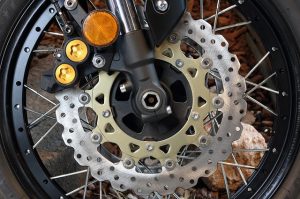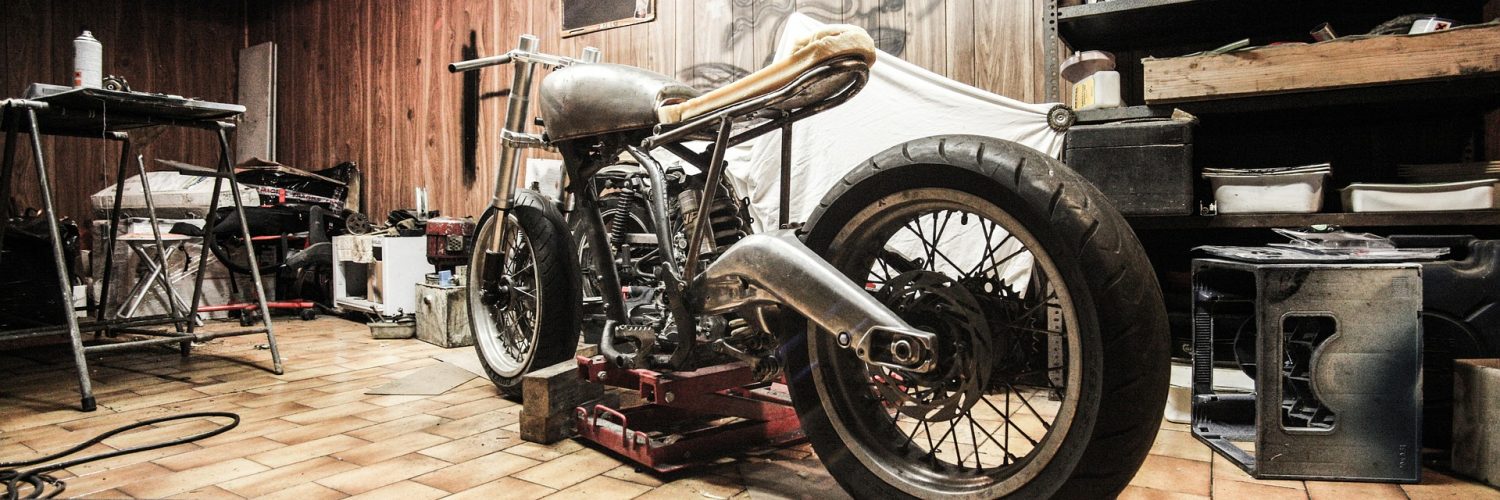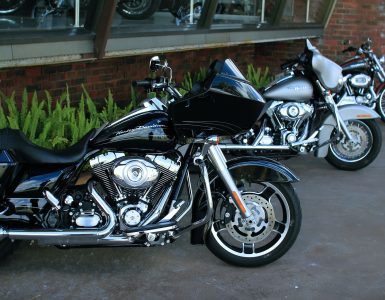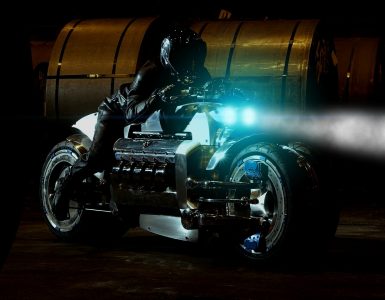They couldn’t be more different. One has four wheels, the other has two. One has no protection from the elements, the other is as comfy as a living room.
One has handlebars, the other has a steering wheel. One won’t stand up by while itself, the other is ready to go any time.
The differences between cars and motorcycles are many, yet, these days, because of the march of technology, more and more engineering features are appearing in both four- and two-wheeled modes of transport.
Considering that at least three major automobile companies also make bikes — BMW, Honda, and Suzuki — that shouldn’t come as a total surprise.
Driveshafts
Perhaps the first engineering feature to be shared by both cars and motorcycles was the driveshaft. As far back as the 1920s, some bike-makers were using it on their products — notably, BMW, which continues to use it to this day.
Moto Guzzi also utilizes shaft drive, as do Honda, Kawasaki, Suzuki, and Triumph, among others. Shaft final drive has several advantages.
For starters, it’s almost indestructible and can handle any size of engine; it’s also maintenance-free and will generally last the life of the bike.
On the other hand, many shaft drive motorcycles have a discernible “lash” during cornering and power application, and shaft drive has a greater power loss between the primary drive and the rear wheel than, say, a chain drive arrangement.
Disc brakes
Motorcycle aficionados will argue this one until the cows come home, but it’s generally agreed that the first production bike with disc brakes was the Honda CB750, which first appeared in 1966 at the Tokyo Motor Show and went on sale in North America in 1969.
Although there were initially some noise and vibration problems with this setup, disc brakes have gone on to become standard throughout the industry and no self – respecting motorcycle would be seen without discs, front and back.
This has led to the use of ABS, which can be found on bikes like the Honda Goldwing, most big BMWs, and as an option on Harley’s ElectraGlide line, among others.
Liquid cooling
The origins of this are lost in the mists of time. Long-gone British manufacturer Scott is said to have introduced it in the mid-1920s, but we’ll never know for sure.
But even in the beginning, it became obvious to motorcycle designers and engineers that a liquid-cooled engine is more efficient and durable than an air-cooled one.
Suzuki’s GT750, introduced in 1971, is said by many to have been the first mass production bike to utilize liquid cooling and Austrian manufacturer KTM is credited with introducing the first liquid-cooled four-stroke off-road bike, in the early 1980s.
Either way, the only real disadvantages to liquid cooling are aesthetics and maintenance. An air-cooled engine doesn’t really have a cooling system, aside from its oil supply, but liquid-cooling requires a radiator and hoses of some sort, and both will eventually start to leak and deteriorate.
Stereo systems
Apparently, the first production automobile to have a radio was a German version of the Studebaker, in 1932. The first bike to have a radio was probably a police bike, likely in the mid-1930s, in San Francisco. It was made by Motorola. These days, all the big touring machines have a stereo system.
Harley-Davidson first brought in XM Satellite radio, in 2006, and later in the year, offered hands-free Bluetooth technology on some of its ElectraGlide models.
Nowadays, you can get helmets with built-in Bluetooth and things like a multi-disc CD player and speed-volume control have almost become passé.
Needless to say, you can also get GPS navigation systems on some bikes as well — the Honda Goldwing for example, and most of the top-end tourers have MP3 players.
Cruise control
The first motorcycle with cruise control was probably a Harley-Davidson, with a thumb-controlled throttle lock screw on the right handlebar. Anti-clockwise to lock it in place and immobilize the throttle grip and clockwise to release.
Not the safest arrangement in the world, Harley introduced it at least 50 years back and used it on most of its models right up until a few years ago.
Now, Honda, BMW, Victory, Harley-Davidson, and others have sophisticated, electronically controlled cruise control systems and Harley just introduced throttle-by-wire on its ElectraGlide models, which dispenses with cables and screws altogether.
Reverse
Seems oxymoronic for a motorcycle to have Reverse, but the Honda Goldwing, BMW K1200LT and Russian-built Ural sidecar have it, and you can order a kit from Harley-Davidson for their sidecar units.
Usually, it works off the starter button and moves the bike backward at a very low rate of speed. There are also some aftermarket kits available that clip on to the rear wheel, which, if you have a sidecar hack or trike, would be handy.
What’s next
None of the features discussed here are particularly unusual. They’re available throughout the industry and have been around for years.
But coming up — maybe — are bikes and scooters with permanent roof coverings. BMW and Piaggio already sell roofed scooters in Europe, and safety spoilsports have suggested that seat belts might be coming as well.
Honda already offers its Goldwing with an optional airbag, so buckling up might not be as far-fetched as it sounds.





















Add comment